#mary beatrice davidson kenner
Text
The Unofficial Black History Book
Mary Beatrice Davidson Kenner (1912-2006)
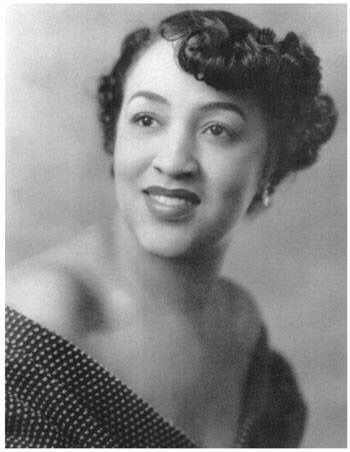



Mary Beatrice Davidson Kenner is a forgotten black inventor who changed the way menstrual pads operated, but her idea was turned down because of the color of her skin, and she was later not given credit for her invention.
This is her story.
Mary Beatrice Davidson Kenner was born on May 17th, 1912, in Monroe, North Carolina. She came from a family of inventors. Her father, Sidney Nathaniel Davidson (1890–1958), patented a clothing press that would fit into suitcases but never made money off of the invention, which failed. Her grandfather invented a light signal for trains, and her sister, Mildred Davidson Austin Smith (1916–1993), invented and commercially sold board games.
As a child, Kenner was interested in creating tools to make everyday life more convenient. She had her first idea when she was six years old—a self-oiling door hinge—but the idea never came to fruition. She would draw her ideas throughout her childhood. One of her ideas was a portable ashtray that would attach to the cigarette carton and a sponge tip that would soak the rainwater off an umbrella.
When Mary turned 12, her family moved to Washington, D.C., and she would often visit the United States Patent and Trademark Office to see if anyone had beaten her to patent any of her ideas.
Side Note: The Patent System - that started in 1787, was not open to African Americans who were born into slavery, even if freed, as it did not consider them citizens.
After graduating high school, Mary enrolled at Howard University but later dropped out when she couldn't afford tuition. She took on odd jobs and became a federal employee during WWII. She worked for the Census Bureau and later for the General Accounting Office. Mary also chaperoned younger women who attended dances at military bases in the Washington, D.C., area.
She met soldier and renowned boxer James "Jabbo" Kenner and married him in 1951. They adopted five boys but had no kids of their own. She retired from government work and opened a flower shop while continuing to work on her inventions.
By 1957, Kenner had saved enough money to file her first patent for an elastic belt that held sanitary napkins in place. Adhesive Maxi Pads didn't exist at the time.
How the invention worked was that a moisture-proof napkin pocket was built into the belt, which prevented more leaks than the cloth pads and rags women were using at the time.
One company. 'The Sonn-Nap-Pack' was interested in her invention and offered to market it. But when they discovered she was a black woman, they turned her down instantly.
"One day, I was contacted by a company that expressed an interest in my marketing idea. I was so jubilant...I saw houses, cars, and everything else about to come my way. Sorry to say, when they found out I was black, their interest dropped." She said in Laura F. Jeffery's Book, 'Amazing American Inventors of the 20th Century'
Because of racism, they did not patent the sanitary belt until 30 years after Kenner introduced it. But her invention was a crucial step for women's comfort and revolutionized menstrual hygiene during a time when women had limited options.
Between 1956 and 1987, Kenner received five total patents for her household and personal inventions. A backwasher that one could mount on the shower or bathtub wall was among Kenner's inventions for which she received a patent. When her sister was confined to a bed due to multiple sclerosis in 1976, it inspired her to file her third patent.
A special attachment for a walker or wheelchair that included a hard-surfaced tray and a soft pocket for carrying items. Also, a toilet paper holder that made sure the loose end of the roll was always reachable.
Kenner never became rich from her inventions, but her ideas centered on accessibility and ease and paved the way for more inventions in the future.
Mary Beatrice Davidson Kenner died at the age of 93 on January 13th, 2006.
__
Previous
Juneteenth
Next
The Tulsa Race Massacre
__
My Resources
https://www.diversityinc.com/womens-history-month-profiles-mary-beatrice-davidson-kenner-inventor/
#the unofficial black history book#mary beatrice davidson kenner#black history matters#black history 365#black stories#herstory#blackblr#little known black history#forgotten black figures#black figures#for the culture#black activism#black women#black inventors#black female writers#black tumblr writers#writing community#know your history#learn your roots#african american inventors#african american history#writers on tumblr#women of black history#women in history
6 notes
·
View notes
Text
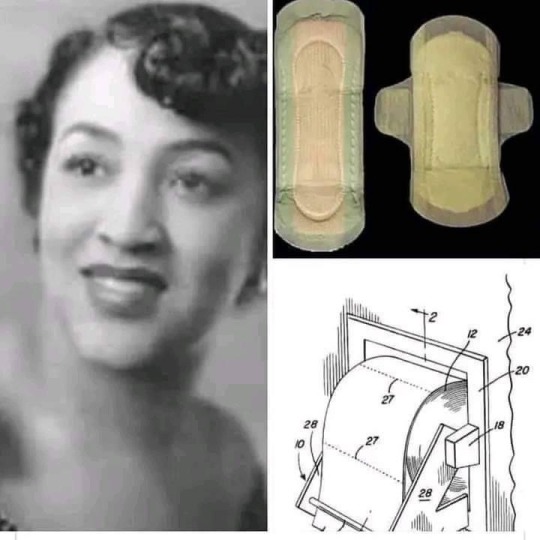
Did you know Mary Beatrice Davidson Kenner was the brilliant woman behind pads (also referred to as sanitary napkins)?
Today we honor Mary Beatrice Davidson, the brilliant woman who developed the sanitary napkin.
Mary's invention was initially rejected because of racial discrimination but 30 years later (in 1956) it was accepted.
She received five patents for her household inventions -- one being the bathroom tissue holder, which she co-invented with her sister.
Thank you Mary for looking out for the ladies. 🖤
18 notes
·
View notes
Text
Black inventors

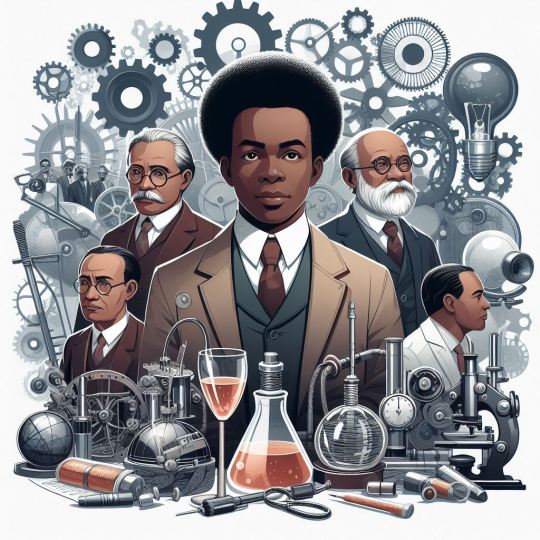


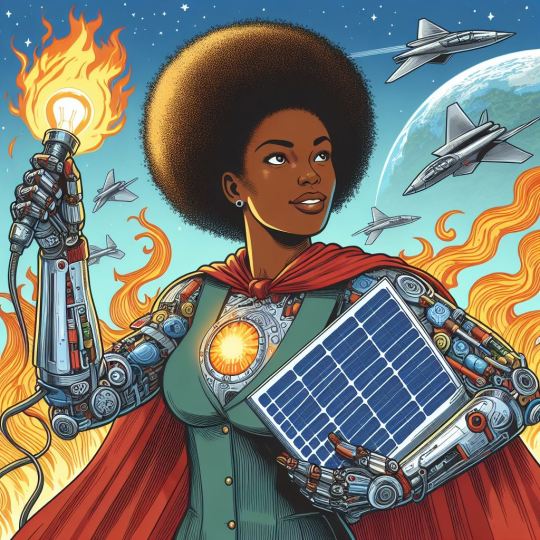








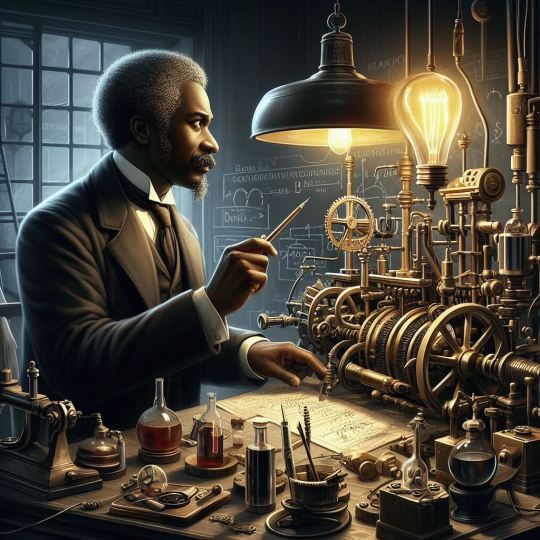
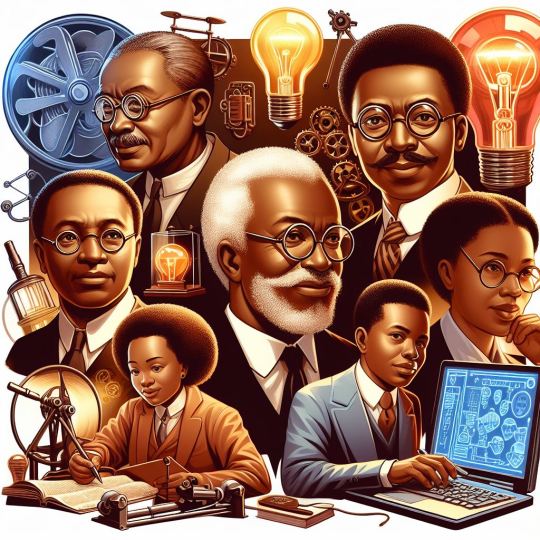
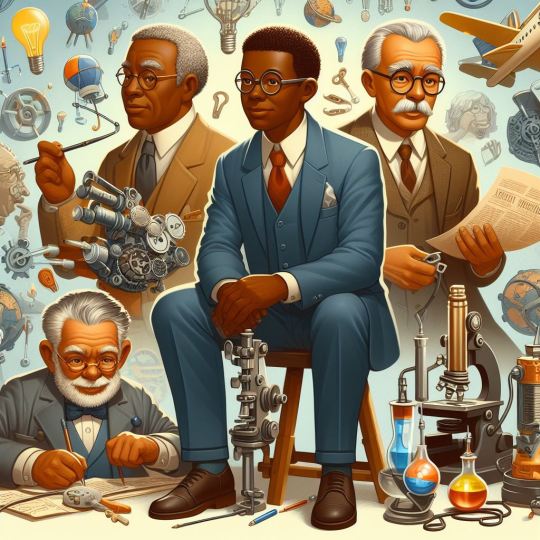
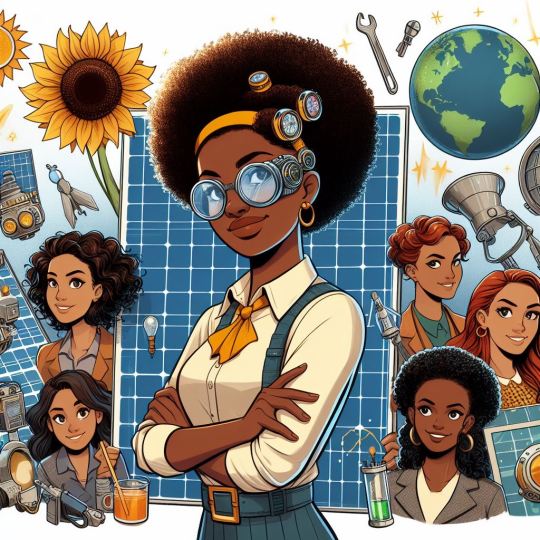







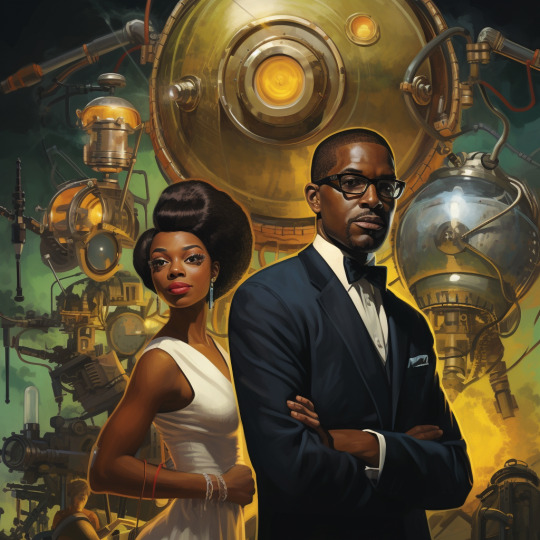

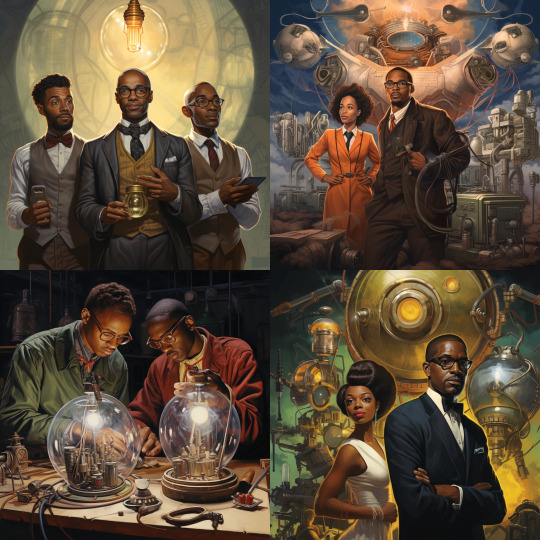


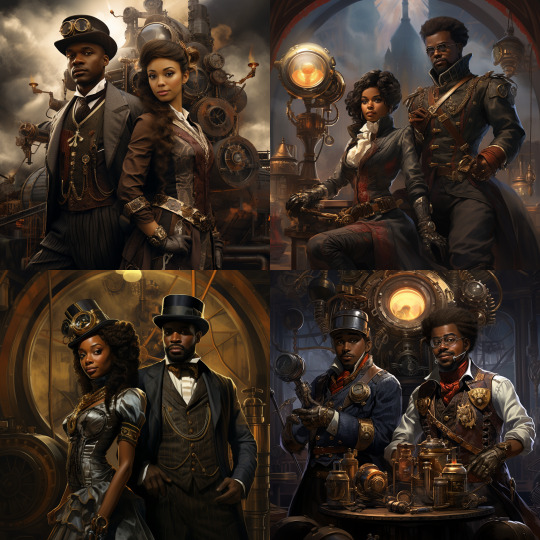
From Perplexity:
Famous black inventors have significantly contributed to various fields, from everyday household items to groundbreaking technological advancements. Here are some notable figures:
George Crum (1824-1914): A chef who is credited with inventing the potato chip in 1853[1].
Frederick McKinley Jones (1893-1961): Developed refrigeration equipment for trucks, trains, ships, and planes, receiving over 40 patents. His invention, the Thermo King, revolutionized the food and medical transport industries[1].
Granville T. Woods (1856-1910): Accumulated almost 60 patents, improving railroad functioning. Notably, he invented the induction telegraph system for train communication[1].
George Washington Carver (1864-1943): An agricultural chemist who developed 518 products from peanuts and sweet potatoes, including ink, dye, soap, and synthetic rubber[1].
Madam C.J. Walker (1867-1919): Became the first African American woman self-made millionaire by creating a line of hair products for African American women[1].
Garrett Morgan (1877-1963): Invented the traffic signal and a safety hood that served as a prototype for the gas mask[1].
Mary Beatrice Davidson Kenner: Patented the sanitary belt in 1957, a significant advancement in women's health and hygiene[1].
Thomas L. Jennings (1791–1859): The first African American to receive a U.S. patent, for a dry-cleaning process[4].
Patricia Bath (1942-2019): Invented a laser cataract treatment, becoming the first African American female doctor to receive a medical patent[4].
Mark Dean (1957-present): Holds over 20 patents, including contributions to the creation of the color PC monitor and the first gigahertz chip[4].
Elijah McCoy (1844-1929): Known for his invention of the automatic lubricator for oiling steam engines, leading to the phrase "the real McCoy" to denote something authentic[4].
These inventors have left a lasting impact on society, demonstrating ingenuity and perseverance in the face of challenges.
Citations:
[1] https://www.oprahdaily.com/life/work-money/g30877473/african-american-inventors/
[2] https://www.parents.com/kids/education/world-changing-black-inventors-that-every-kid-should-know-about/
[3] https://www.black-inventor.com
[4] https://www.biography.com/inventors/g46697619/famous-black-inventors
[5] https://en.wikipedia.org/wiki/List_of_African-American_inventors_and_scientists
From Gemini (formerly Bard):
20 Famous Black Investors with Short Descriptions:
Dr. Shirley Jackson: First Black woman to earn a doctorate in nuclear physics, invested in research and development for the U.S. Department of Defense.
Robert F. Smith: Founded Vista Equity Partners, a private equity firm with over $85 billion in assets under management. Known for his philanthropic endeavors.
Oprah Winfrey: Media mogul and investor, known for her investments in cable channels, production companies, and Weight Watchers.
Udayan I. Lekhraj: Founded CMG Partners, a private equity firm specializing in healthcare investments. Advocate for diversity and inclusion in venture capital.
Catherine Hughes: Founded Urban One, a media company serving the African American community. First Black woman to chair a publicly traded company in the U.S.
Rodney Bryant: Co-founded JUST Capital, a firm that measures and incentivizes corporations to prioritize stakeholder capitalism.
Ellen Johnson Sirleaf: Former President of Liberia, Nobel Peace Prize winner. Focused on economic development and investment in her country.
Ronald Lauder: CEO of Estee Lauder Companies, known for his investments in the beauty industry and philanthropic work.
Charles R. Bronfman: Chairman of The Seagram Company Ltd., invested in various industries including entertainment, real estate, and philanthropy.
John Rogers Jr.: Founded Ariel Investments, a mutual fund company with over $28 billion in assets under management. Advocate for responsible investing.
Marc Morial: Former mayor of New Orleans, currently president of the National Urban League. Focused on economic empowerment of Black communities.
Ronald Watkins: Founding CEO of Watkins Investing Group, invests in real estate and businesses within the Black community.
Melody Hobson: President and CEO of Ariel Investments, known for her work on financial literacy and diversity in boardrooms.
Aisha Evans: Founded BE Capital, a venture capital firm focused on Black and Latinx tech entrepreneurs.
Kevin Hart: Comedian and investor, known for his investments in production companies, streaming platforms, and sports teams.
Jay-Z: Rapper and entrepreneur, known for his investments in music streaming, sports teams, and venture capital funds.
Will Smith: Actor and investor, known for his investments in production companies, media platforms, and venture capital funds.
Serena Williams: Tennis champion and investor, known for her investments in venture capital funds focused on women and diverse founders.
Rihanna: Singer and entrepreneur, known for her investments in beauty brands, fashion lines, and technology startups.
LeBron James: Basketball player and investor, known for his investments in media companies, production companies, and technology startups.
Please note: This list is not exhaustive and can be debated in terms of individual importance and impact.
Reading List on Black Inventors:
Black Inventors: Lives That Mattered by Darlene R. Medford
Hidden Figures: The American Dream and the Untold Story of the Black Women Mathematicians Who Helped Win the Space Race by Margot Lee Shetterly
Lifting the Veil: Celebrating the Unsung Heroes of Black History by Michael Hill
Lost Genius: The Forgotten Black Inventors Who Changed the World by Dennis Freeman
Pioneering Women in American Mathematics: From Agnes Scott to Emmy Noether by Pamela Prochazka
Black Inventors in Science and Technology by Shirley J. Smith
A Colored Man's Reminiscences of James M. Whitfield: With Recollections of the Early Struggles of Colored Men in Boston by Wilbur H. Siebert
Inventing the Future: Black Inventors in Science and Technology by Geneva Gay
African Americans in Science, Math, and Invention by Darlene R. Medford
Black Inventors in the United States by Darlene R. Medford
This list offers a variety of books covering different periods and areas of innovation by Black inventors. Consider exploring further based on your specific interests.
I hope this information is helpful!
#african american history#black history month#black history month 2024#dalle3#midjourney#black inventors#blackhistorymonth#africanamericanhistory#afrofuturism#solar punk#steampunk
13 notes
·
View notes
Text

#Repost @jewishcenterforjustice
——
Today begins Women’s History Month. May we recognize the great tradition of women leaders that have always been a part of our history. From the foremothers of the Torah, to the women that are fighting for equality and justice today, be it in congress, in the streets, or on social media. What woman has made in impact on you, inspired you to make a difference, and to stand up for your Jewish values? Let us know in the comments (and feel free to say Golda Meir!) #womenshistorymonth
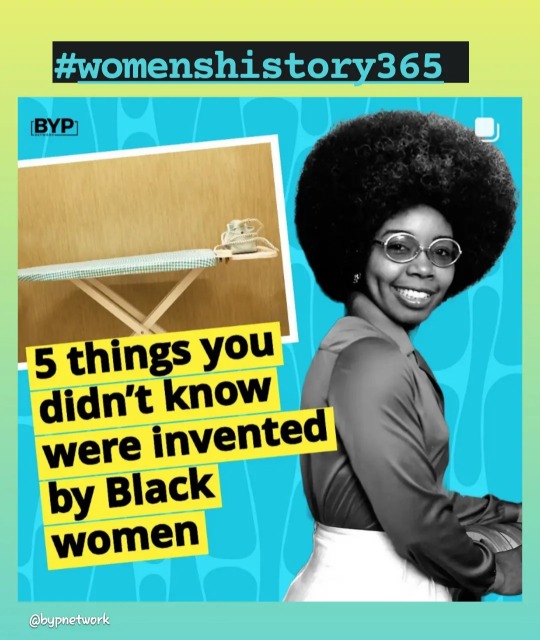

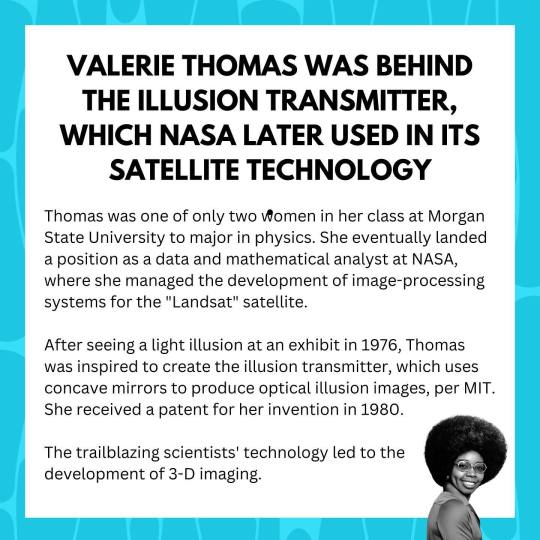



#Repost @bypnetwork
——
Did you know that Black women are behind some of the world's most groundbreaking and significant inventions. 🧫 🧬
In honour of Women’s History Month, let’s take a look at these 5 Black inspiring Women that invented some surprising things that you probably didn’t know!
🧬Marie van Brittan Brown was the brain behind the first home security system.
🧬NASA analyst Valerie Thomas invented a transmitter that led to the development of 3D imaging.
🧬Sarah Boone invented and patented the first modern ironing board in 1892.
🧬Mary Beatrice Davidson Kenner's sanitary belt was the predecessor to the menstrual pad.
🧬Dr. Patricia Bath was an ophthalmologist who invented a cutting-edge device for cataract surgery.
#womenshistorymonth #blackwomen

#Repost @maces.leadership
——
Women History Spotlight!!

#Repost @bcgmag
——
Before there was Lena Horne, there was Savannah’s own Fredi Washington. She was one of the first African-American actresses to gain recognition in films and challenge racism in Hollywood. A proud Black woman, who refused to pass for white.
Born in 1903, Frederika “Fredi” Washington excelled as a dancer, actress, journalist, and Civil Rights activist. She began her career as a dancer in the 1920s in “Shuffe Along,” the first Broadway show created, produced, and performed by African Americans.
It was a landmark in African-American musical theater, credited with inspiring the Harlem Renaissance of the 1920s and '30s. Washington became lifelong friend with another dancer named Josephine Baker.
But she is most known for playing Peola in “Imitation of Life” in 1934. Peola, a light-skinned young African American woman, chooses to reject her dark-skinned mother so she can pass as white in order to escape racial discrimination.
Like Peola, Washington experienced limited opportunities because of her race, but unlike Peola, she never denied her African-American heritage. Her appearance in Imitation of Life exacerbated difficulties she faced as a light-skinned black woman. #WomensHistoryMonth ✊🏿
2 notes
·
View notes
Text
#SabíasQue... Mary Beatrice Davidson Kenner fue la brillante mujer detrás de las toallas sanitarias
El invento de Mary fue inicialmente rechazado debido a la discriminación racial, pero 30 años después (en 1956) fue aceptado.
Recibió cinco patentes por sus inventos domésticos, una de las cuales es el soporte para pañuelos de baño, que inventó conjuntamente con su hermana.
Gracias Mary por cuidar de las damas.
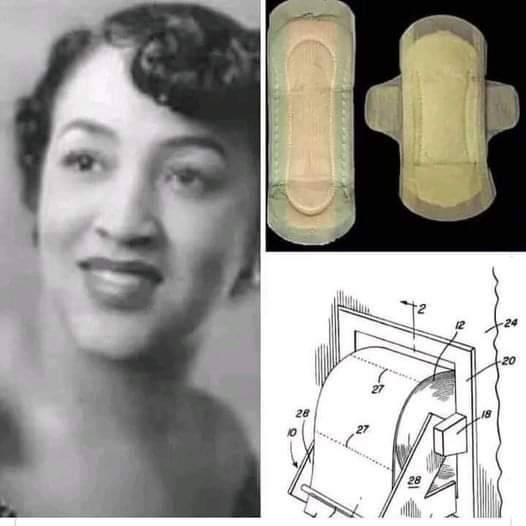
0 notes
Text

Mary Beatrice Davidson Kenner (May 17, 1912 – January 13, 2006) was an inventor. She invented the sanitary belt with a moisture-proof napkin pocket, which was not used until 30 years after she invented it. The company that first showed interest in her invention rejected it after they discovered that she was an African American woman. She was able to save up enough money to get her first patent on the sanitary belt.
She was born in Monroe, North Carolina, and came from a family of inventors. Her father, whom she credited for her initial interest in discovery, was Sidney Nathaniel Davidson. He patented a clothing press that would fit in suitcases, though he made no money on the invention. Her grandfather invented a light signal for trains, and her sister, Mildred Davidson Austin Smith invented and commercially sold board games.
She received five total patents for her household and personal item creations. She shared the patent on the toilet tissue holder with her sister, Mildred Davidson. The patent number was US4354643 dated October 19, 1982. She held a patent on a back washer that could be mounted on the shower or bathtub wall. This invention was patented in 1987 patent #4696068. She patented the carrier attachment for a walker in 1959 after Mildred developed multiple sclerosis. #africanhistory365 #africanexcellence
0 notes
Text
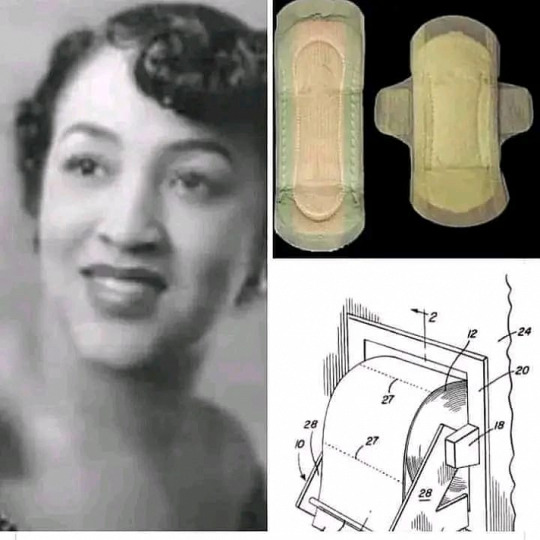
Post: Mary Beatrice Davidson Kenner may not be a name that most people are familiar with but most women... https://www.blaqsbi.com/5Rbi
0 notes
Video
youtube
This Woman Invented Something We Use EVERY DAY, But You've Never Heard o... You may use her invention every day, but have you heard of Mary Beatrice Kenner? This African American inventor revolutionized women's health with her creation. Learn about her incredible story in this eye-opening video during Black History Month. Discover the shocking history of Mary Beatrice Davidson Kenner, the woman who invented something we use every day but is rarely given credit for it - the sanitary belt. Learn about her journey to success and how her invention revolutionized women's hygiene. This is a story you won't want to miss! In honor of #BlackHistoryMonth, we're celebrating the incredible stories of hidden figures like this woman who invented something we use EVERY DAY! Tune in for a shocking (and inspiring) history lesson on this unsung hero and her contributions to the invention revolution. #WomenInSTEM #HiddenFigures #UnsungHeroes #InventionRevolutionThis Woman Invented Something We Use EVERY DAY, But You've Never Heard of Her! (Shocking History)
0 notes
Text
MRS.T'S CORNER: "Mary Beatrice Davidson Kenner?"
Mary Beatrice Davidson Kenner?
View On WordPress
0 notes
Text
Mary Beatrice Davidson Kenner patented the sanitary belt. Although she created it in the 1920s, it wasn’t until 1957 that she cornered the market. Well known and praised among the female population, it revolutionized feminine protection for decades.
0 notes
Text
Women Inventors: Pioneers of Innovation
In this blog, we will explore the remarkable history of women inventors and their groundbreaking inventions that have transformed various aspects of our daily routines and technologies.
Introduction
Throughout history, women have made significant contributions to the world of innovation and invention. From everyday household items to groundbreaking technologies, women inventors have played a crucial role in shaping our modern lives. In this blog, we will explore the remarkable history of women inventors and their groundbreaking inventions that have transformed various aspects of our daily routines and technologies.
The Dishwasher:
The invention of the dishwasher revolutionized kitchen chores, and we have Josephine Cochrane to thank for it. In 1886, Cochrane, a wealthy socialite, invented the first practical dishwasher. Frustrated with her servants chipping her fine china, she designed a machine that used water pressure to clean dishes effectively. Cochrane's invention laid the foundation for the modern dishwasher, simplifying household tasks and saving valuable time.
Grocery Bags:
Marion Donovan, a mother and innovative thinker, revolutionized the way we carry groceries. In the 1950s, Donovan developed the first reusable grocery bag, introducing a durable and eco-friendly alternative to disposable paper or plastic bags. Her invention not only reduced waste but also paved the way for the widespread adoption of reusable bags, leading to a significant positive impact on the environment.
Coffee Filters:
Melitta Bentz, a German housewife, made mornings more enjoyable for coffee lovers worldwide. In 1908, Bentz invented the first coffee filter. Dissatisfied with the bitter taste of coffee grounds, she perforated a brass pot, lined it with blotting paper, and poured hot water over it. This simple yet ingenious invention led to the creation of the Melitta company, which still produces coffee filters today and ensures a smooth and flavorful cup of coffee every time.
Windshield Wipers:
Mary Anderson's invention of windshield wipers in 1903 revolutionized automobile safety. While visiting New York City, Anderson observed a driver struggling to clear snow off the windshield. Determined to find a solution, she invented a manually operated device consisting of a rubber blade and arm that could clear the windshield with a single swipe. Her invention made driving safer, especially in inclement weather conditions.
Toilet Paper Holder:
Many of us take toilet paper holders for granted, but the innovation behind them came from an African-American inventor named Mary Beatrice Davidson Kenner. In 1957, Kenner patented the sanitary paper holder, which ensured that the end of the toilet paper roll was always accessible and prevented it from unraveling. Her invention has become an essential fixture in bathrooms worldwide, enhancing convenience and hygiene.
GPS (Global Positioning System):
Dr. Gladys West, an African-American mathematician, played a pivotal role in the development of the Global Positioning System (GPS). In the 1960s, West worked as part of a team that conducted complex calculations to model the Earth's shape and improve satellite orbits. Her contributions to the development of GPS technology have been instrumental in navigation, mapping, and numerous other applications.
Gas Heaters:
Alice Parker, an African-American inventor, revolutionized home heating systems. In 1919, Parker patented a gas heating furnace that distributed warm air through a series of ducts. Her invention allowed for more efficient and controlled heating, making homes more comfortable and energy-efficient.
FaceTime Technology:
Dr. Deborah Estrin, a computer scientist, played a significant role in the development of FaceTime technology. Her research on mobile sensing systems and participatory sensing laid the foundation for applications like FaceTime, which enable video calls and real-time communication across distances.
WiFi:
Hedy Lamarr, an Austrian-American actress, made significant contributions to wireless communication. During World War II, Lamarr co-invented a frequency-hopping spread spectrum technology that formed the basis of modern WiFi, Bluetooth, and other wireless communication systems. Her invention revolutionized the way we connect and communicate wirelessly.
Conclusion:
The history of women inventors is a testament to their ingenuity, perseverance, and contributions to society. From Josephine Cochrane's dishwasher to Mary Beatrice Davidson Kenner's toilet paper holder, these remarkable women have left an indelible mark on our daily lives. Whether it's simplifying household chores, improving safety, enhancing communication, or promoting sustainability, women inventors have continually pushed the boundaries of innovation.
By celebrating the achievements of women inventors, we inspire future generations to pursue their passions, break barriers, and contribute to the world of invention. It is essential to recognize and acknowledge the remarkable contributions of women inventors, as their inventions have shaped and continue to shape the world we live in today. Let us appreciate and honor the pioneering spirit of these women who have paved the way for a brighter future.
La Jolie MLN: ”It’s our mission to give young ladies the lessons all of you can share with us. So, let’s share our experiences, strength and stories. We cordially invite you to join a cohort of empowered women. Please send your stories to [email protected]
0 notes
Text
The Unofficial Black History Book
Juneteenth (June 19th, 1865)
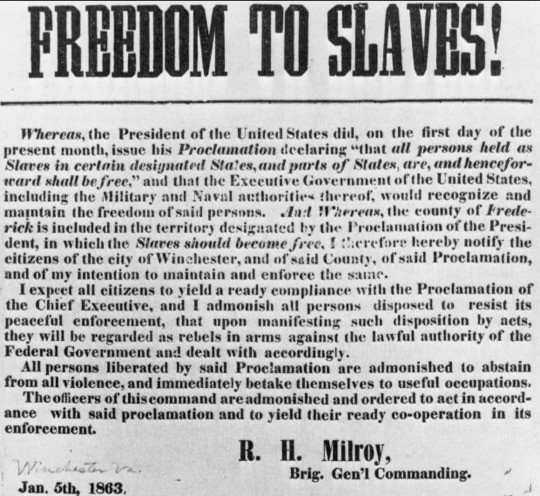

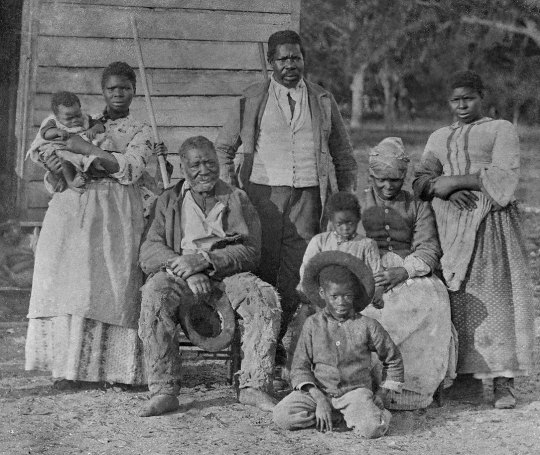

Everyone knows Juneteenth as the holiday commemorating the end of slavery in the United States.
But not everyone knows that the slaves weren't officially free.
This is the story.
Juneteenth National Independence Day, also known as Black Independence Day, Emancipation Day, Freedom Day, Jubilee Day, and Juneteenth Independence Day, is a holiday commemorating the end of slavery in the United States, observed annually on June 19th.
Juneteenth honors the end of slavery in the United States and is considered the longest-running African-American holiday.
Juneteenth, short for "June Nineteenth," marks the day in 1895 that Federal troops arrived in Galveston, Texas, to take control of the state and ensure that all slaves were freed. The troops' arrival came almost two and a half years after the Emancipation Proclamation.
Two months earlier, Confederate General Robert E. Lee had surrendered at Appomattox Courthouse in Virginia, but slavery had remained relatively unaffected in Texas -- Until U.S. General Gordon stood on Texas soil and read General Orders No. 3: "The people of Texas are informed that, in accordance with a Proclamation from the Executive of the United States, all slaves are free."
The Emancipation Proclamation
On January 1st, 1863, The Emancipation Proclamation was issued by President Abraham Lincoln. It established that all enslaved people in the Confederate state in rebellion against the Union "shall be then, thenceforward, and forever free."
However, The Emancipation did not immediately set the slaves free.
The Proclamation only applied to places under Confederate control and not to slave-holding border states or rebel areas already under Union control. But when Northern troops advanced into the Confederate South, many slaves fled behind Union lines.
In Texas, slavery continued as the state experienced no large-scale fighting or a significant presence of Union troops. Many slave masters from outside of Texas had moved there, as they viewed it as a safe haven for slavery.
After the war ended in the spring of 1865, General Granger's arrival in Galveston the following June signaled freedom for the 250,000 slaves in Texas. Although emancipation didn't happen for everyone, slave masters withheld the information until after harvest season.
Celebrations broke out among newly freed African-Americans, and that was the beginning of Juneteenth. The following December, slavery in America was formally abolished with the adoption of the 13th Amendment.
On June 19th, 1865, freedmen in Texas organized the first annual "Jubilee Day". In the following decades, Juneteenth celebrations featured barbecues, music, prayer services, and other activities, and as African Americans migrated from Texas to other parts of the country, so did the Juneteenth tradition.
In 1979, Texas became the first state to make Juneteenth an official holiday, other states followed over the years. In June 2021, Congress passed a resolution establishing Juneteenth as a national holiday. On June 17th, 2021, President Biden officially signed it into law. 160 years later, it officially became a federal holiday.
__
Previous
Janet Collins
Next
Mary Beatrice Davidson Kenner
__
My Resources
#juneteenth#black history matters#black history 365#black history is american history#black culture#black history#know your history#learn your roots#freeish#black history facts#history#human rights#freeish since 1865#freedom day#writers on tumblr#the unofficial black history book#black female writers#writing community#black stories#black tumblr#black activism
11 notes
·
View notes
Photo
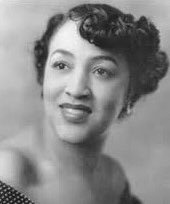
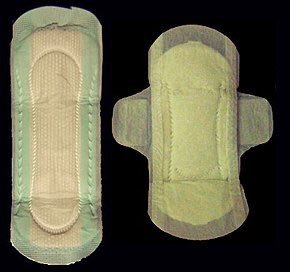
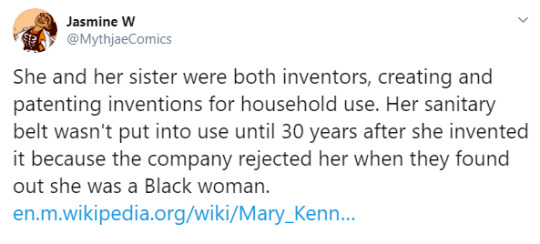
#BlackHistoryFact - African American Inventor Mary Beatrice Davidson Kenner is known for developing the sanitary pad
MEFeater Magazine
“She and her sister were both inventors, creating and patenting inventions for household use. Her sanitary belt wasn’t put into use until 30 years after she invented it because the company rejected her when they found out she was a Black woman.” https://en.m.wikipedia.org/wiki/Mary_Kenner
- @MythjaeComics
The Forgotten Black Woman Inventor Who Revolutionized Menstrual Pads
Mary Beatrice Davidson Kenner was a self-taught inventor who created the sanitary belt and filed five patents in her lifetime.
“https://twitter.com/MythjaeComics/status/1225209347510358017
#Mary Beatrice Davidson Kenner#black women#black women inventor#black women inventors#black history month#black history
57K notes
·
View notes
Text
GBN's Daily Drop: Mary Beatrice Davidson Kenner - Inventor of the Sanitary Belt (LISTEN)
GBN’s Daily Drop: Mary Beatrice Davidson Kenner – Inventor of the Sanitary Belt (LISTEN)
by Lori Lakin Hutcherson (@lakinhutcherson)
Today’s GBN Daily Drop podcast is based on the Friday, March 4 entry in the “A Year of Good Black News” Page-A-Day®️ Calendar for 2022, about inventor Mary Beatrice Davidson Kenner who, along with the sanitary belt, patented her creations of a serving tray attachment for walkers, a wall-mountable back washer and an accessible toilet paper…
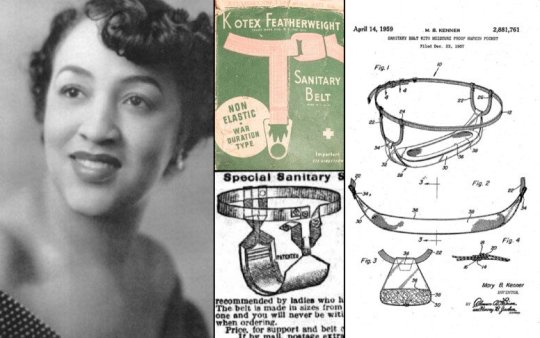
View On WordPress
#black inventors#GBN Daily Drop Podcast#Lori Lakin Hutcherson#Marc Lamont Hill#Mary Beatrice Davidson Kenner#sanitary belt#woman inventor
20 notes
·
View notes
Link
Mary Beatrice Davidson Kenner was a self-taught inventor who created the sanitary belt and filed five patents in her lifetime.
4 notes
·
View notes
Link
109 notes
·
View notes